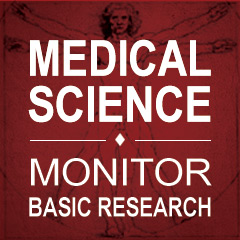Get your full text copy in PDF
Hind Almodaimegh, Shazia Adnan, Mariam Abdalla, Shmaylan Alharbi, Abddulamalik Alkatheeri, Abdulkareem Albekairy
Med Sci Case Rep 2017; 4:4-8
DOI: 10.12659/MSCR.902153
BACKGROUND:
Pulseless electrical activity (PEA) is a clinical condition characterized by unresponsiveness and lack of palpable pulse in the presence of organized cardiac electrical activity. It is induced by factors that results in the inability of cardiac muscle to generate sufficient force in response to electrical depolarization. Those factors could be physiological, pathological, or drug-induced. Previous reports have identified haloperidol-induced QT-prolongation, but to the best of our knowledge this is the first case report of a patient with documentation of a normal baseline echocardiogram who experience haloperidol-induced PEA.
CASE REPORT:
A 46-year-old woman was observed who developed a PEA a few minutes after receiving 2 mg of intravenous (IV) haloperidol. Haloperidol was administered to control her agitation and aggressiveness. A few minutes after administering the haloperidol, she experienced PEA and cardiac arrest. She recovered after receiving CPR for six minutes and 1 mg IV epinephrine, then she was intubated for mechanical ventilation and sedated. The drug was discontinue and was not restarted. For the rest of her stay in the hospital, the patient experienced no further cardiac events. Two days later, she became stable and she was extubated. She was discharged after 60 days with an out-patient follow-up appointment. Applying the Naranjo adverse drug reaction probability scale to this case (score of 4) indicated the possible relationship between the patient’s adverse cardiac event and haloperidol.
CONCLUSIONS:
IV haloperidol is advocated as safe effective therapy for agitated delirium in medical or surgical cardiac patients in the intensive care unit. Thus, it may be overlooked as a cause of pulseless electrical activity. Therefore, practitioners should be instructed about the potential for IV haloperidol to bring about bradycardia prompting pulseless electrical movement despite performing comprehensive cardiac examination before prescribing haloperidol.
Keywords: Antipsychotic Agents, Echocardiography, Haloperidol





